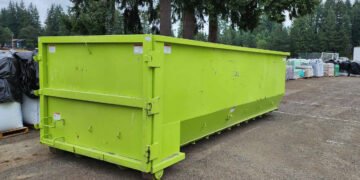Did you know that clutter has a negative impact on your mental health? Clutter is anything in your home that you don’t need and doesn’t add aesthetic value either. Besides impeding your physical movement, clutter can also be disruptive to your thinking. This is why it’s important to learn how to Declutter Your Home.
Cluttered surroundings give untidy stimuli and contribute to stress. It saps your energy and time when you need to hunt for things you actually need among the clutter. Decluttering can relieve stress by giving a sense of control and accomplishment.
Decluttering is part of mental hygiene as much as physical hygiene. If you don’t know where and how to start, read on! Here’s the process to declutter your home.
Get in the Right Frame of Mind
It can be easier to start if you take a moment to imagine how good and relieved you’ll feel when you’re done. This is one of the helpful decluttering tips. Picture how a decluttered home will lessen the load on your mind and lighten your mood.
You’ll also be more confident to invite people into your home. Besides your individual life, your home will also be more conducive to your social life. It allows your home to reflect where you are now without the weight of old and unnecessary items.
Having these in mind can make decluttering not only easier, but it can also make it enjoyable. If you’re asking how to declutter your room or house, the first thing you need is motivation. You’ll need motivation and enthusiasm to sustain a methodical decluttering.
Start With an Area You’ll Be Most Pleased to Declutter
You might already have the right mindset to motivate you. Yet the amount of clutter can make it seem like a possible starting point is out of sight. If you’re in such a position, start with the area or room that’ll be most satisfying once it’s decluttered.
This could be your bedroom where you spend most of your downtime. It could be your home office where you spend most of your time working. It might also be the living room where you often have to entertain guests.
Get an empty box, put on some music you like, and start clearing away at random. Once you get your bearings and decluttering feels more doable, you can start designing a more methodical approach.
Set Decluttering Goals and a Timeline
Now it’s time to sustain that sense of relief and control you felt while clearing away at random. You need to consider what might be a large amount of clutter to sort through. Having specific goals will help you handle the frustrations and obstacles you’ll likely encounter.
Outline the amount of clutter you have. Write down or draw a map of the rooms you’ll need to sort through and clear.
Give these areas or rooms a grade based on the amount of clutter they have. This can help you prioritize your time. You can use a scale of 1-3, with the most cluttered rooms ranking a 3.
Once you have your declutter checklist, tackle each room or area one at a time. Set target completion times or dates for every stage of the cleanup. Remember to set attainable timelines.
Schedule work on particular areas where you expect decluttering to take longer. An example would be the basement or the garage. Do this so you don’t make abrupt stops in your flow and you’ll know how much time you have for each area.
Must Read -: The Beginner’s Guide to Planning a Home Remodel
Your timeline will also depend on the size of the rooms or areas besides the amount of clutter. A more realistic or attainable timeline would be to tackle one room or area each weekend.
Have a Sorting System
You’ll need to create a system for sorting the items you find as you go through each room or area.
You can design your own or you can use the “three-box” method, a simpler variation of the”four-box” method. This method helps you make quick decisions for each item you find. It can help prevent you from lingering on decisions and end up with the same clutter you started with.
Get 3 boxes or containers and label each with “Keep”, “Toss”, and “Store”.
As you go through the items, put those that are useful in your daily life in the “Keep” box. Empty this box after completing each room and put the items in organized places.
Put the items that you don’t have any use for in the “Toss” box. After completing a space, empty this box too and decide which items you’ll donate and which will go to the trash.
For seasonal items or those with sentimental value, put them in the “Store” box. Label each container or put an inventory sheet on top. Stack them in a proper storage area.
What to do with the Clutter
Now that you know the formula for how to declutter your home, there are some options for the items in your “Toss” box.
For items still in good condition, you can donate them. This can be reassuring knowing that these items will find use in other homes with people who need them.
You can donate clothes and household items to local charities. Remember to check their guidelines for accepted items.
Glass, plastics, and paper can be up for recycling. If your neighborhood has a recycling bin, put the recyclable items in. If not, bag them and take them to the nearest recycling drop-off point.
If you’re up for it, you can also hold a garage sale. This way you can make money out of your cleared clutter.
If most of your clutter is already trash, you can rent a dumpster instead. This is a stress-free and affordable option if you have a lot to throw away. Check out Discount Dumpster’s dumpster rental.
Now That You Know How to Declutter Your Home, Clear Away!
Clutter can have a negative effect on your well-being. It can drain your energy and increase your stress. Now that you know how to declutter your home, clear as much clutter away as you can.
Want to know more tips about clearing your home of clutter? Read our other guides here.






























































